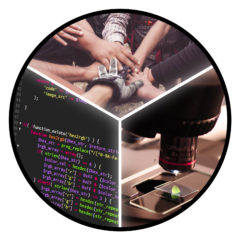Previously we introduced “light” version of Paired Sciencing: just teaming up with a colleague in a quiet conference room and focusing on tasks at hand, not necessarily shared work.
There is also extended version, where actual science is done in pair. Activities can include: design of experiment, writing a grant, actual benchwork or microscope alignment, and many more.

In academia we often work alone on our tasks, occasionally meeting to discuss results or plans. That creates huge distance between design and implementation of the plan. Working in pair with trusted colleague will ensure that obvious mistakes are caught early on. This is especially important in biological experiments when protocols can take days to finish.
